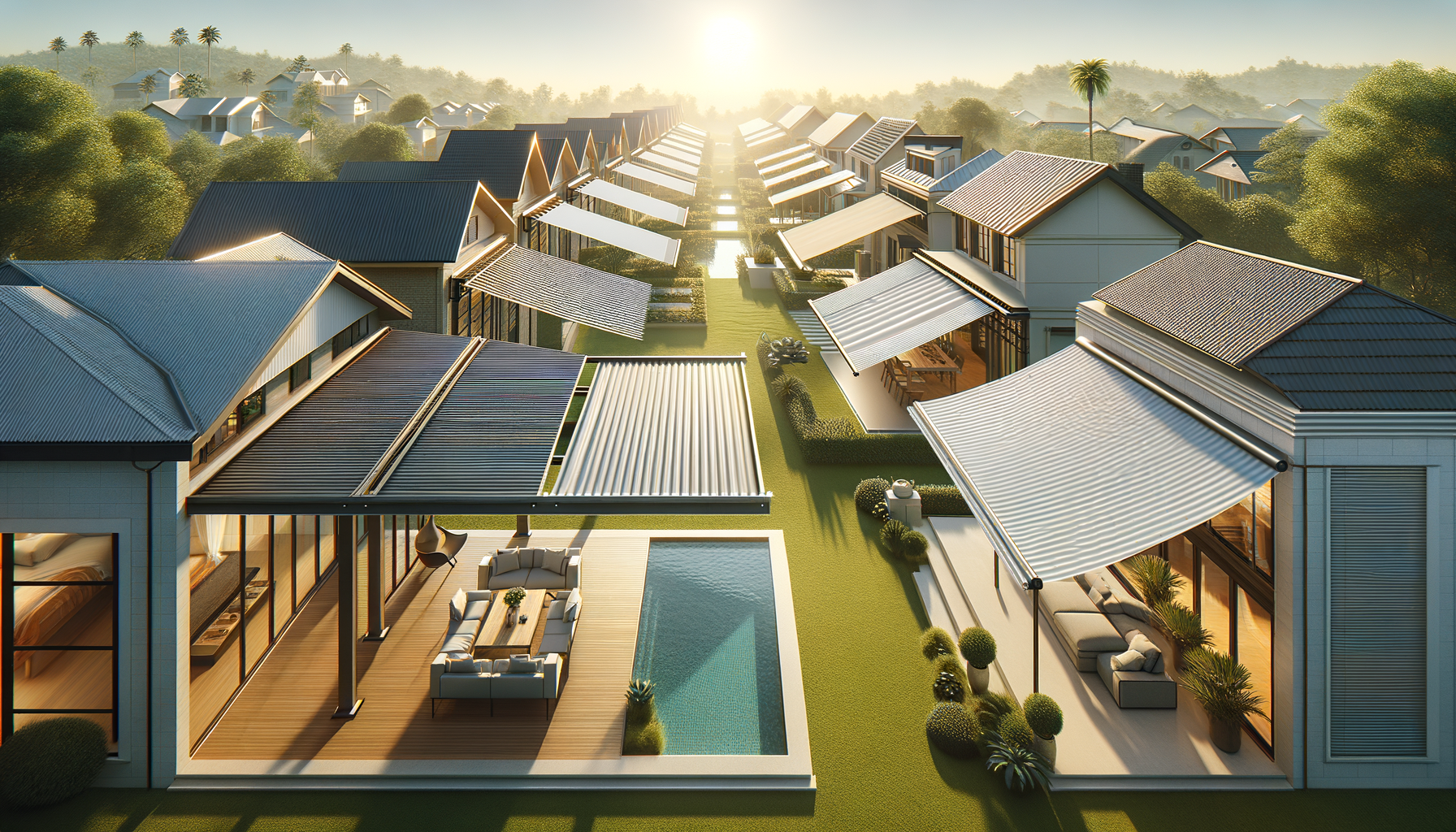Introduction to Outdoor Awnings
Outdoor awnings are a practical and stylish addition to any home, offering a blend of aesthetic appeal and functional benefits. These structures provide shade, protect against harsh weather, and enhance the outdoor living experience. Selecting the right awning involves understanding various types and materials, enabling homeowners to make informed decisions that suit their specific needs and preferences.
With the increasing emphasis on outdoor living spaces, awnings have become a popular choice for homeowners looking to extend their usable space while adding a touch of elegance. Whether you’re aiming to shield your patio from the sun or create a cozy outdoor dining area, the right awning can make a significant difference.
Understanding Different Types of Awnings
Awnings come in various styles, each offering unique benefits. The primary types include fixed awnings, retractable awnings, and freestanding awnings. Each style is designed to cater to different needs and aesthetic preferences.
Fixed awnings are permanent structures that provide continuous protection from the elements. They are ideal for areas that require constant shade and are available in a variety of materials and designs. These awnings are particularly well-suited for windows and doors, offering both shade and a decorative element.
Retractable awnings, on the other hand, offer flexibility. They can be extended or retracted as needed, providing shade when desired and allowing sunlight when not. This type of awning is perfect for patios and decks, where the need for shade may vary throughout the day. The ability to retract the awning helps in protecting it from adverse weather conditions, thereby extending its lifespan.
Freestanding awnings are versatile and can be placed anywhere in the yard. They are not attached to any structure, making them ideal for creating shaded areas over patios, gardens, or poolside spaces. These awnings can be moved and adjusted as needed, offering convenience and adaptability.
Benefits of Retractable Awnings
Retractable awnings are among the top options for homeowners seeking flexibility and convenience. One of their primary benefits is the ability to control the amount of sunlight and shade, which can significantly enhance comfort in outdoor spaces.
These awnings are equipped with manual or motorized mechanisms, allowing users to extend or retract the fabric with ease. This functionality is particularly useful in regions with variable weather, as it enables homeowners to protect their awnings during storms or high winds.
Moreover, retractable awnings contribute to energy efficiency by reducing indoor temperatures. By shading windows and doors, they prevent excess heat from entering the home, potentially lowering air conditioning costs. This not only benefits the environment but also results in cost savings for homeowners.
In addition to their functional advantages, retractable awnings are available in a wide range of colors, patterns, and materials. This variety allows homeowners to select designs that complement their home’s exterior, enhancing overall curb appeal.
Choosing the Right Material for Your Awning
The material of an awning plays a crucial role in its durability, appearance, and functionality. Common materials include canvas, acrylic, and polyester, each offering distinct advantages.
Canvas awnings are traditional and offer a classic look. They are durable and provide excellent UV protection, making them suitable for long-term use. However, canvas requires regular maintenance to prevent mold and mildew.
Acrylic awnings are known for their vibrant colors and resistance to fading. They are water-resistant and easy to clean, making them a practical choice for areas with frequent rain. Acrylic is also less prone to mold, which reduces maintenance efforts.
Polyester awnings offer a balance between durability and cost-effectiveness. They are lightweight and resistant to stretching, making them ideal for retractable awnings. Polyester is also available in various finishes, including coatings that enhance UV protection and water resistance.
When selecting an awning material, consider factors such as climate, maintenance preferences, and aesthetic goals. By choosing the right material, homeowners can ensure their awning remains a valuable addition to their home for years to come.
Conclusion: Enhancing Your Home with Awnings
Outdoor awnings are more than just a decorative feature; they are a practical investment that can transform the functionality and appearance of your home. By providing shade, reducing energy costs, and enhancing outdoor spaces, awnings offer numerous benefits to homeowners.
When selecting an awning, consider the type, material, and design that best suits your needs. Whether you opt for a fixed, retractable, or freestanding awning, each choice offers distinct advantages that can enhance your outdoor living experience.
Ultimately, the right awning can add value to your home, improve comfort, and create an inviting atmosphere for family and friends. With careful consideration and planning, you can choose an awning that complements your lifestyle and enhances your home’s overall appeal.




Leave a Reply